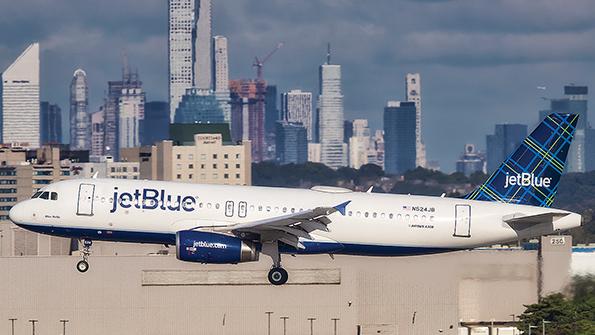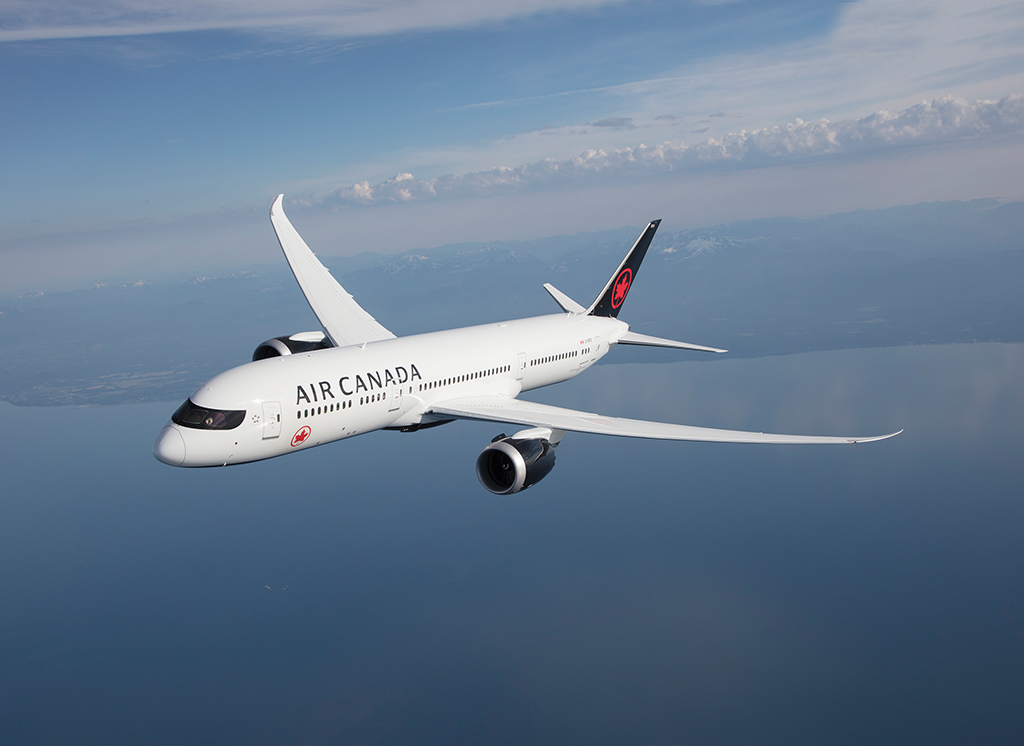
If airlines’ schedules for July hold, more flights will cross the Atlantic than in any month in the history of commercial aviation.
Airlines are slated to operate 4,353 transatlantic flights per week in July, which would break the record of 4,238 weekly flights set in July 2019, according to an Airlines for America (A4A) analysis of publicly available scheduling data. US airlines will operate 44% of transatlantic flights in July, while non-US carriers will fly 56%.
The soaring transatlantic market has resumed the momentum seen before the COVID-19 pandemic, and airlines operating across the pond are bullish about the future.
“It’s really across the board we’re seeing strength” on the transatlantic, United Airlines managing director-international network planning Matt Stevens told ATW. The Star Alliance member is making the biggest transatlantic push among US carriers and has been aggressive in the market since last summer, when it added a number of new routes to Europe. The carrier is slated to operate around 29% more flights and 32% more seats across the Atlantic in July 2023 versus July 2019.
Stevens said the airline is seeing high demand not just on traditional routes, but also on new services launched in the 2022 summer.

“If you look at places like Paris or Rome, they’re doing quite well,” he explained. “If you look at some of the new routes we added last year, we’ve seen great results so far. Overall [transatlantic] demand is recovering favorably and the demand is keeping pace—and actually is a little bit better than where it was—if you compare it to 2019 at this point.”
Stevens said routes launched in 2022 from United’s Newark hub to Spanish destinations Palma de Mallorca and Tenerife with, respectively, a Boeing 767-300ER and a 757-200, have performed well, indicating broad strength in transatlantic demand.
United isn’t alone in feeling good about where 2023 transatlantic demand is going.
“There are plenty of reasons to be optimistic,” Air Canada VP-international affairs, network and partnerships Mary-Jane Lorette told ATW, adding that transatlantic demand “remains high and is continuing to ramp up.”
That sentiment is shared by other transatlantic operators. “International revenue continues to be led by the transatlantic,” Delta Air Lines president Glen Hauenstein told analysts during a late January earnings call. “We are seeing robust demand across our expanded footprint in Europe and expect the spring and summer to set new record revenues.”
Indeed, with demand high and leisure passengers—who have led the air travel recovery—willing to pay premium fares on transatlantic routes, strong and reliable yields are persuading airlines to add back and grow capacity in the market, according to Geoff van Klaveren, managing director-advisory at aviation consultancy IBA and formerly head of business planning and strategy for British Airways.
“Airlines are putting capacity back on the Atlantic because the yields are very good,” van Klaveren told ATW. “They’re making very good profits. It’s always been the largest premium market in the world. It’s always been very lucrative. Pricing last year was excellent. It makes sense to put the capacity back where you’re getting good pricing.”
Airlines also have needed fewer long-haul aircraft for the slower-to-open Asia market, which has become logistically difficult for European airlines because of Russian airspace restrictions.
“European carriers are struggling to fly services to Asia, and although China and Asia have finally opened up after the pandemic, the airlines still have the issue of Russian overflight,” van Klaveren said. “It’s much more difficult to operate flights from Europe to Asia because they can’t fly over Russia, so it’s much easier to fly their long-haul aircraft to the US. And the demand is there. The bounce back in demand in 2022 was mainly driven by leisure, but now we’re seeing a strong, strong recovery in business demand as well. And we have not seen any deterioration in leisure demand.”
Fewer Routes
It should be noted that, while 2.7% more flights will cross the Atlantic in July versus four years ago, the number of routes will be below 2019 levels. There will be 376 transatlantic city pairs served nonstop in July 2023, down 10% compared to 418 routes served in July 2019, according to A4A.
Also, growth in seats is outpacing growth in the number of flights. For example, Delta’s July 2023 schedule shows a 2.3% growth in flights compared to four years ago, outpaced nearly three times by a 6.4% increase in transatlantic seats.
This indicates airlines are flying larger aircraft with more frequencies on fewer routes compared to pre-pandemic. For example, reliable east coast transatlantic airports Boston Logan and Washington Dulles will see upticks of 9.5% and 20.5%, respectively, in July 2023 flights across the ocean versus July 2019, according to A4A. But US airports that are higher risk for airlines to serve on transatlantic routes are seeing fewer weekly flights. For example, New Orleans Armstrong’s transatlantic flights will drop 28.6% and Las Vegas Reid’s will fall 29.3% in July versus four years ago.
As carriers lean on alliances and partnerships to extend networks in a more low-risk way, partly to make up for staffing and aircraft delivery shortages, flying into partners’ hubs is a top priority. The transatlantic market continues to be dominated by the trio of antitrust-immunized joint ventures aligned with the three global alliances: Air France-KLM-Virgin Atlantic (SkyTeam); American Airlines-BA-Finnair-Iberia (oneworld): and United-Air Canada-Lufthansa (Star Alliance).
According to Air Canada’s Lorette, transatlantic partnerships are more important than ever. She pointed to new routes the airline will open during the summer season to partner Star Alliance carriers’ hubs in Europe.
“We’re super excited about Montreal-Copenhagen, which we are launching with a 787 during the summer,” Lorette said. “The route is interesting to us because it’s a partner’s hub. SAS operates a hub there, so there’s ample connectivity into Northern Europe using SAS. It’s going to let us optimize travel flows because we’ll have the ability to flow passengers beyond Copenhagen. But we’ll also have the ability to tap into what is a strong local market between Canada and Copenhagen.”
The carrier, which already operates to Copenhagen from Toronto Pearson, is also starting service this summer from Toronto to Brussels, the hub of Lufthansa subsidiary Brussels Airlines.
“The hub is going to offer convenient connectivity into Europe, but also into Africa,” Lorette said. “So, you see a little bit of a pattern here. Sure, we’re focused on network diversification, but we’re also focused on partner hubs, leveraging the strengths that we have. We have a strong partnership portfolio.”
New Entrant
While the big three US global airlines—American, Delta and United—have long operated across the Atlantic, the market gained a new entrant when JetBlue Airways started long-anticipated service between New York JFK and London Heathrow in August 2021. In September 2022, it launched Boston-Heathrow flights.
In March the airline will add a second daily flight between JFK and Heathrow, while cutting one of its two daily JFK-London Gatwick frequencies (keeping 3X-daily service to London). The airline said it gained permanent Heathrow slots in October 2022.
JetBlue flights from JFK and Boston to Paris Charles de Gaulle will get underway during the upcoming summer season.
JetBlue’s transatlantic flights are operated with Airbus A321LR aircraft. The New York-based carrier also has 13 A321XLRs on order, enabling deeper penetration into Europe. The carrier will put the emphasis on a premium offering on its XLRs, with plans to configure the aircraft with 24 of its Mint-branded lie-flat seat pods.
“We expect two-thirds of the revenue to come from one-sixth of the seats,” JetBlue route planning director Eric Friedman told the 2022 Routes World conference in Las Vegas.
According to A4A’s analysis of scheduling data, the four US airlines combined will operate 11.3% more flights and 13.6% more seats across the Atlantic in July 2023 versus July 2019, a boost helped in part by both JetBlue’s addition to the market and United’s aggressive push. (American will offer fewer transatlantic flights and seats in July than before the pandemic.)
Another factor fueling transatlantic operators’ optimism: Airlines on both sides of the Atlantic anticipate smoother operations at airports after last summer’s congestion led to extensive delays and cancellations at European and US airports, with both Heathrow and Amsterdam Schiphol putting in place temporary capacity caps. Airlines, airports and customs services are catching up in terms of staffing and training after being surprised last year by rapidly returning demand as the pandemic receded. Heathrow said 92% of passengers went through security in under 10 minutes during late December’s Christmas peak. The airport, the top transatlantic gateway in Europe, said it had its busiest Christmas season in three years while providing “smooth and efficient service for passengers.”
The transatlantic market, always one of the most important international markets, is bouncing back stronger than ever.

